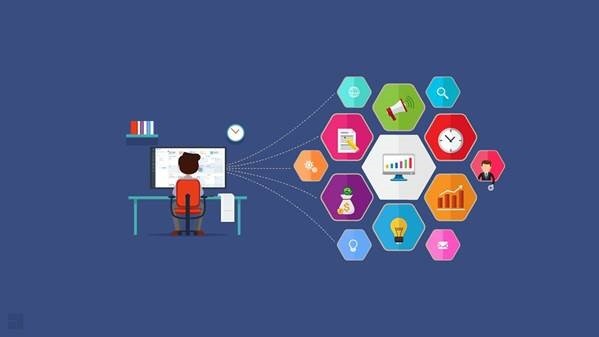Introduction
Employee engagement is a critical factor in the success of any organization. Engaged employees are more productive, committed, and motivated to contribute to the company’s goals and objectives. However, measuring and improving employee engagement can be challenging for many organizations. This is where business intelligence (BI) and workforce analytics come into play. By leveraging BI tools and analytics, organizations can gain valuable insights into employee behavior, preferences, and performance, enabling them to identify areas for improvement and implement targeted initiatives to enhance employee engagement. In this article, we will explore the role of BI in workforce analytics and how it can help organizations enhance employee engagement and drive business success.
The Importance of Employee Engagement
Employee engagement refers to the level of emotional commitment and dedication that employees have towards their work and the organization. Engaged employees are more likely to go above and beyond their job responsibilities, contribute innovative ideas, and stay with the company long-term. Research has shown that organizations with high levels of employee engagement experience lower turnover rates, higher customer satisfaction, and greater profitability.
The Role of Business Intelligence in Workforce Analytics
Workforce analytics involves the use of data and analytics to understand and improve various aspects of the workforce, including recruitment, retention, performance, and engagement. BI plays a crucial role in workforce analytics by providing organizations with the tools and insights needed to collect, analyze, and interpret workforce data effectively. Here are some key ways in which BI can enhance employee engagement through workforce analytics:
- Employee Feedback and Surveys: BI tools enable organizations to collect and analyze employee feedback and survey data to gauge employee satisfaction, identify areas of concern, and measure engagement levels. By analyzing trends and patterns in employee feedback, organizations can identify areas for improvement and take proactive steps to address issues and enhance engagement.
- Performance Metrics and KPIs: BI platforms allow organizations to track key performance indicators (KPIs) related to employee performance, productivity, and job satisfaction. By monitoring KPIs such as employee turnover rates, absenteeism, and performance ratings, organizations can identify trends and patterns that may indicate areas of low engagement and take corrective action to improve employee morale and motivation.
- Predictive Analytics: BI tools with predictive analytics capabilities enable organizations to forecast future trends in employee engagement and identify factors that may impact engagement levels. By analyzing historical data and external factors such as market conditions and organizational changes, organizations can anticipate potential challenges and proactively implement strategies to mitigate risks and maintain high levels of employee engagement.
- Segmentation and Personalization: BI enables organizations to segment the workforce into different groups based on factors such as job role, department, and tenure. By analyzing engagement data for different employee segments, organizations can tailor engagement initiatives and communication strategies to meet the specific needs and preferences of each group, maximizing the effectiveness of their efforts.
Case Study: How Company X Used BI for Employee Engagement
Company X, a leading technology company, recognized the importance of employee engagement in driving innovation and business success. However, the company faced challenges in measuring and improving employee engagement due to the lack of visibility into employee feedback and performance data.
To address these challenges, Company X implemented a comprehensive BI solution for workforce analytics. The BI platform integrated data from various sources, including employee surveys, performance evaluations, and HR systems, to provide a holistic view of employee engagement across the organization.
Using advanced analytics and visualization tools, Company X was able to analyze employee feedback, identify trends and patterns, and prioritize initiatives for improving engagement. Interactive dashboards provided managers and HR professionals with real-time insights into employee sentiment, enabling them to take proactive steps to address issues and enhance employee morale and motivation.
As a result of its BI-driven approach to employee engagement, Company X saw significant improvements in employee satisfaction, retention, and productivity. Employees felt heard and valued, leading to higher levels of commitment and loyalty to the organization. The company also experienced lower turnover rates and increased innovation, driving business success and competitive advantage.
Conclusion
Employee engagement is essential for organizational success, and business intelligence plays a crucial role in enhancing engagement through workforce analytics. By leveraging BI tools and analytics, organizations can collect, analyze, and interpret employee data to gain valuable insights into engagement levels, identify areas for improvement, and implement targeted initiatives to enhance employee morale and motivation. From employee feedback and performance metrics to predictive analytics and personalized engagement strategies, BI enables organizations to foster a culture of engagement and drive business success through their most valuable asset—their people.
FAQs
Q: How can organizations ensure the privacy and security of employee data when implementing BI for workforce analytics?
A: Organizations can ensure data privacy and security by implementing robust data governance policies, encryption protocols, and access controls to protect sensitive employee information from unauthorized access and misuse. Compliance with data privacy regulations such as GDPR and CCPA is also essential to safeguard employee privacy rights.
Q: What are some common challenges organizations may face when using BI for employee engagement?
A: Common challenges include data silos, poor data quality, resistance to change, and the need for skilled data analysts and HR professionals to interpret and act on the insights generated by BI tools. However, these challenges can be overcome through proper data integration, training, and collaboration between HR and IT departments.
